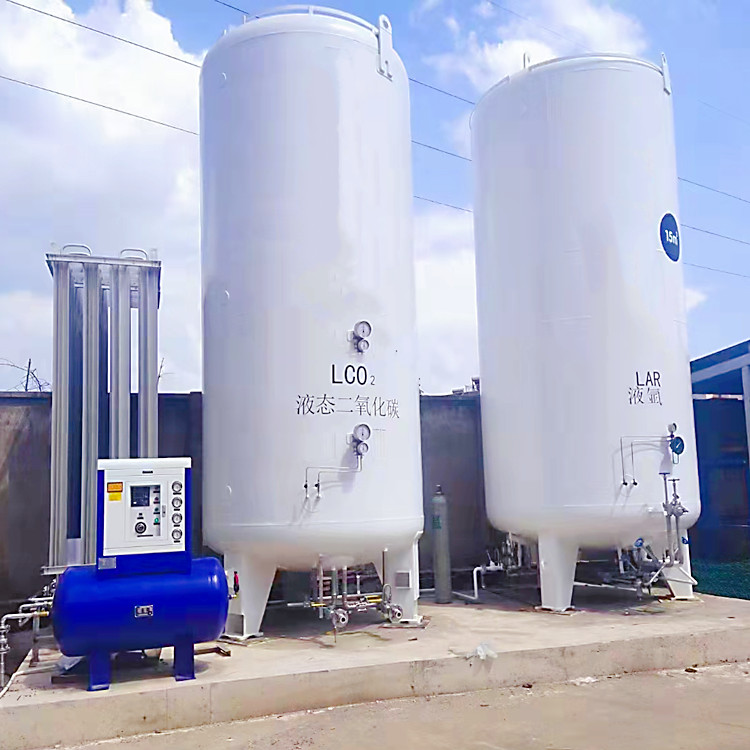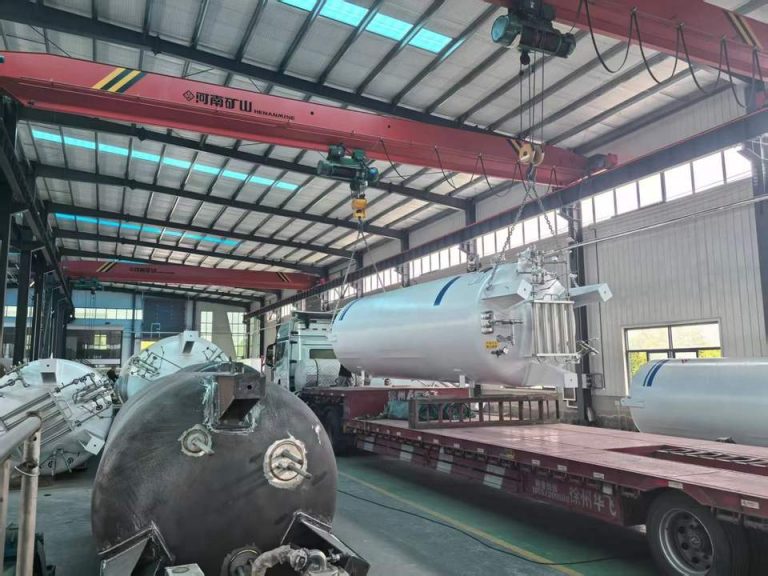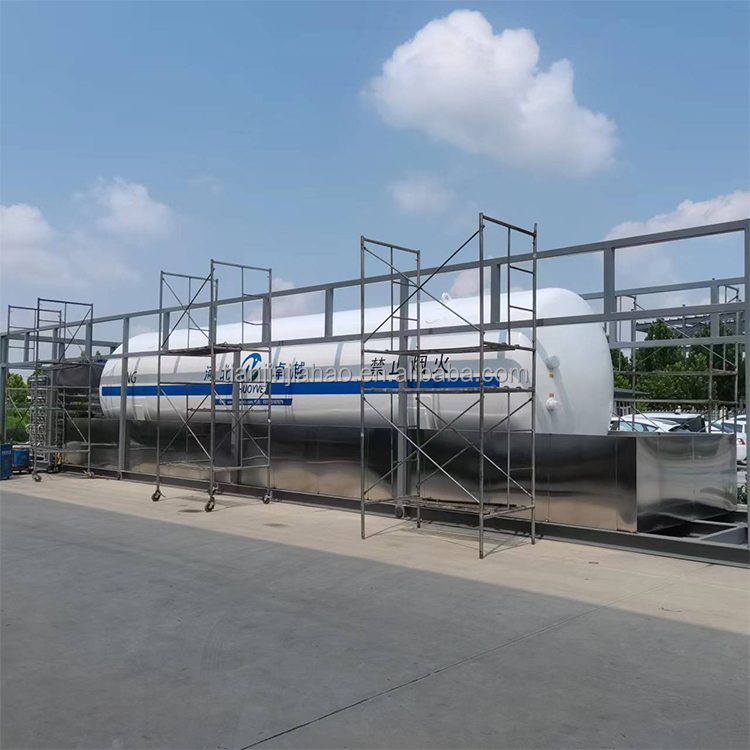Against the backdrop of the continuous growth of global industrial and environmental protection demands, cryogenic carbon dioxide storage tanks, as key equipment for efficiently storing liquid carbon dioxide, their selection directly affects production safety, operational costs, and environmental compliance. This article will provide professional guidelines for global purchasers from four dimensions: core parameters, application scenarios, key points for selection, and industry trends.
I. Core Parameters: The cornerstone of Safety and Efficiency
Thermal insulation performance
High-quality storage tanks adopt vacuum powder insulation technology. The interlayer is filled with perlite and evacuated to ensure an extremely low evaporation rate during long-term storage. For instance, the vacuum degree of storage tanks with a volume of no more than 10 cubic meters should be no more than 2Pa, while that of storage tanks with a volume of over 50 cubic meters should be no more than 5Pa. This design can reduce energy consumption and is particularly suitable for industrial scenarios with continuous operations.
Materials and Structures
The inner container is usually made of 16MnDR low-temperature alloy steel, while the outer container can be selected from Q235-B or 16MnR carbon steel depending on the regional environment. The double-layer structure design not only enhances the pressure resistance but also effectively isolates the external temperature fluctuations, preventing the liquid carbon dioxide inside the tank from forming dry ice due to temperature differences, which could lead to equipment damage.
Safety system
The double safety valve group configuration is standard. When one group of valves malfunctions, the other group can take over immediately, significantly reducing the risk of leakage. In addition, the integration of pressure gauges, differential pressure level gauges and vacuum detection systems enables operators to monitor the status inside the tank in real time, ensuring that the filling and liquid discharge processes are controllable.
Ii. Application Scenarios: Cross-industry solutions
In the industrial sector, the chemical and pharmaceutical industries rely on storage tanks as reaction media or coolants. Their high-pressure sealing property can prevent impurities from contaminating raw materials.
Energy transition: In carbon capture and storage (CCS) projects, large storage tanks are used to store carbon dioxide underground, helping enterprises achieve their carbon neutrality goals.
Agricultural innovation: Liquid carbon dioxide as a plant growth promoter, the stable supply capacity of storage tanks can increase the yield of greenhouse crops.
Environmentally friendly fire extinguishing: Its non-combustible property makes it an ideal fire extinguishing agent for places such as data centers and museums.

Iii. Key Points for Selection: A decision-making framework that matches the requirements
Volume and Form
Choose vertical or horizontal storage tanks based on the daily average usage. Vertical type saves space and is suitable for factories with limited space. Horizontal type is convenient for transportation and suitable for distributed application scenarios. For instance, if food processing enterprises need to frequently deliver carbon dioxide to multiple workshops, horizontal storage tanks offer greater flexibility.
Environmental adaptability
In high-humidity or coastal areas, anti-corrosion coatings for outer containers should be selected to prevent rust. In extremely cold regions, the insulation layer needs to be strengthened to prevent brittleness at low temperatures. Brands like Jinding offer regional material customization services, which can significantly extend the lifespan of equipment.
Ease of operation
Give priority to choosing storage tanks equipped with intelligent liquid level monitoring systems, which can wirelessly transmit data to the central control room to reduce the frequency of manual inspections. Some high-end models also support remote pressure adjustment, enhancing the speed of emergency response.
Iv. Industry Trends: Intelligence and Sustainability
Large-scale and modularization: To meet the large-scale demands of industries such as petrochemicals and power, super-large storage tanks with a capacity of over 200 cubic meters are gradually becoming popular. The modular design facilitates on-site assembly.
Internet of Things integration: Sensor networks can monitor parameters such as vacuum degree and temperature in real time, and predict maintenance cycles through AI algorithms, reducing the risk of downtime. For instance, a certain European chemical plant has reduced its annual maintenance cost by 30% through an intelligent storage tank system.
Innovation in environmental protection materials: Bio-based composite materials are in the experimental stage and may replace some metal components in the future, further reducing the carbon footprint.
The selection of low-temperature carbon dioxide storage tanks needs to balance technical parameters, application scenarios and long-term costs. It is recommended that purchasers have in-depth communication with suppliers, conduct on-site inspections of equipment operation cases, and pay attention to industry certifications (such as ASME, PED).
Zhuoyue Gas Equipment is a professional provider of cryogenic gas equipment solutions. The cryogenic carbon dioxide storage tanks we produce are of high quality, long service life, energy-saving and environmentally friendly. If you have any questions, please contact us






